We usually think of bamboo as a giant grass, the fastest-growing plant on earth. And that it is. But there are also dwarf bamboo varieties that make for excellent ground cover, borders and accent pieces. In the Amazonian undergrowth, you can actually find bamboo that grows no bigger than a pencil.
Giant timber bamboos are amazing and impressive, but sometimes you just need something small and unobtrusive. In fact, there are many reasons you might prefer to have a smaller bamboo plant, and we’ll talk about those reasons in this article.
NOTE: This article first appeared in October 2019, last updated in September 2024.
When you buy a small pot of bamboo from a nursery, though, how will you know if it’s going to stay small or take off after a year? In this article, we will also give you a list of species to look for if you want a dwarf bamboo or a ground cover. Or, if it’s a bamboo giant you’re after, or a tall privacy screen, these will be varieties to avoid. Although they can be great for short hedges or accents alongside more towering specimens.
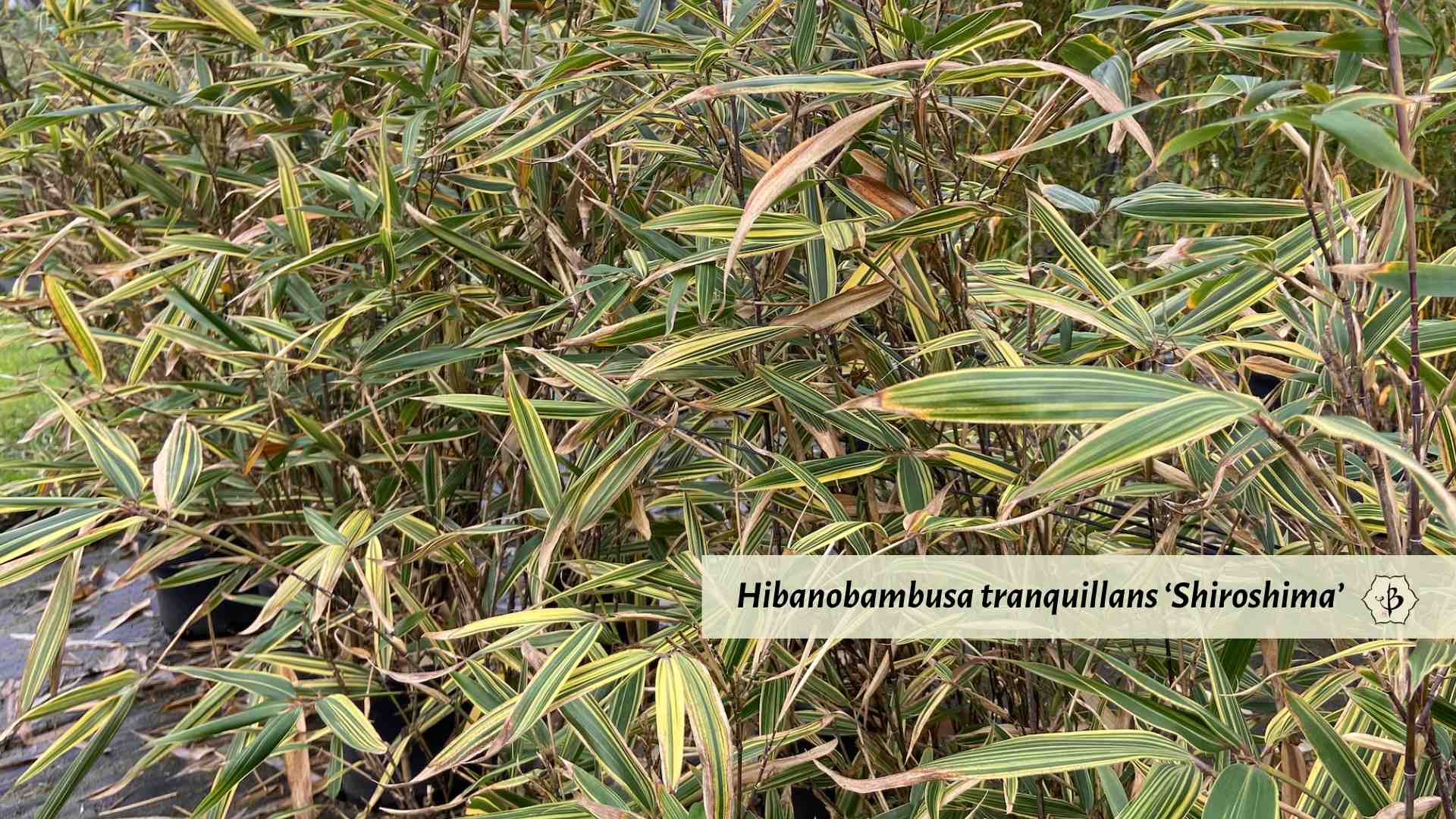
Benefits of dwarf bamboo
There are plenty of reasons why you might prefer to grow a dwarf bamboo rather than one of those noble grasses that gets to be 20, 30, or 60 feet tall.
Space limitations for bamboo
The most obvious benefit of dwarf bamboo is that it just doesn’t need as much space. If you are gardening in a suburban neighborhood with only a small patch of dirt to work with, you might just have to stick with small plants.
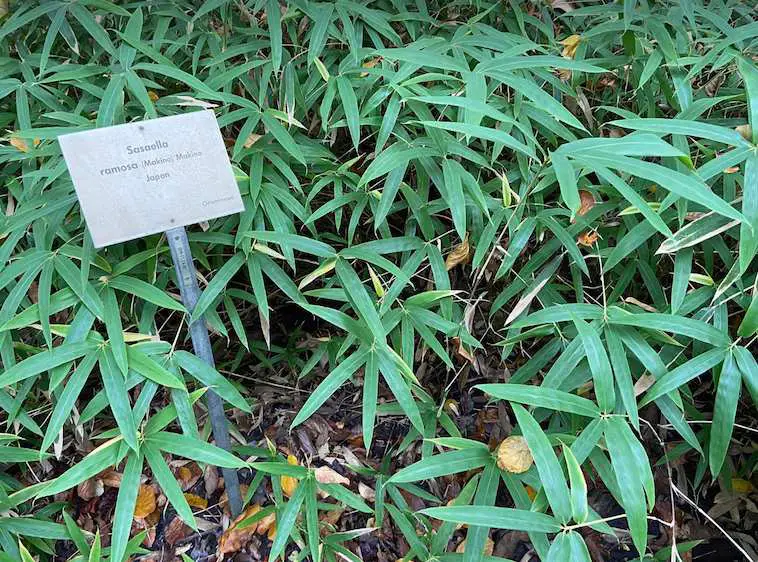
A lot of gardeners are afraid to plant bamboo on account of its notorious reputation. And rightly so. Many species of bamboo, particularly the running varieties, can really take over your yard. And once established, it won’t be long before those aggressive rhizome roots crawl under the fence and invade your neighbors’ gardens, too.
One solution is to look for clumping bamboos, like Alphonse Karr, a beautifully striped bamboo, or Oldham’s bamboo, which is a giant timber variety with a clumping growth habit. But if you really want to keep it compact, you might want to plant a species of dwarf bamboo.
Keep in mind, however, that most dwarf bamboos are actually runners, with pretty expansive rhizomes. They might not get very tall, but they will tend to spread out. The good news is that even though the roots are aggressive, they’re still relatively small in size, so they aren’t too hard to dig up. Still, I’d strongly recommend some kind of root barrier or containment trench.
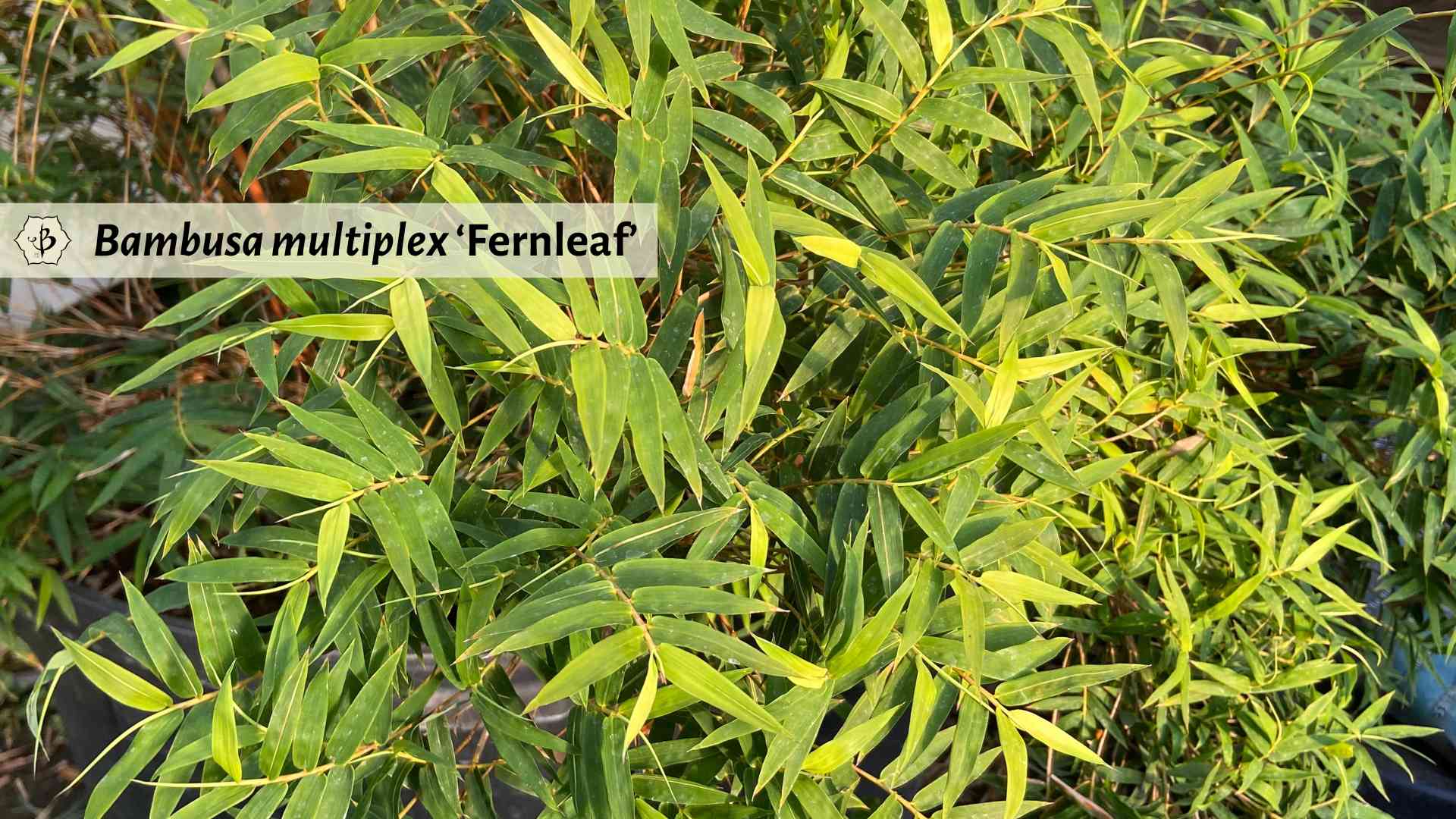
Dwarf bamboo in the shade
Their low stature makes dwarf bamboo a good choice in the understory, beneath taller trees. These shady zones are the most suitable setting for dwarf bamboo. Perhaps your garden space is limited because you already have a few big trees in your yard, leaving your whole garden obscured by shadows. So much for those juicy tomatoes and zucchini.
With limited light and vertical space to work with, dwarf bamboo is a great alternative. These types of bamboo typically thrive in the undergrowth, where they only see occasional splinters of direct sunlight. Also, you don’t have to worry about giant culms—for which bamboo is famous—shooting up some couple of feet a day and getting all tangled up in your pine trees.
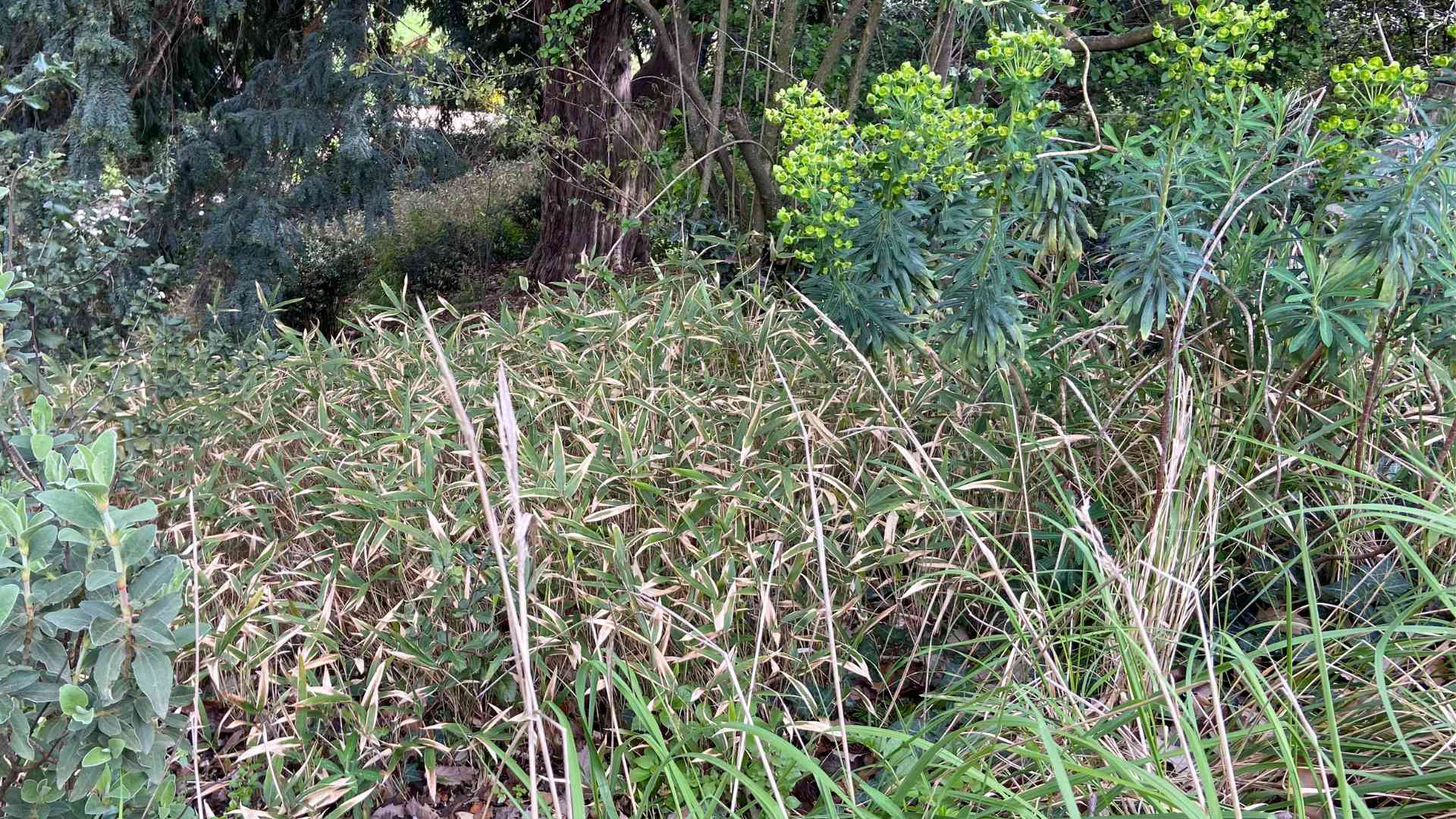
Bamboo as an accent or ground cover
In many cases, a bamboo enthusiast will plant dwarf bamboo in addition to some larger varieties, not simply as a substitute, but as a complement. When you look at a mature bamboo grove, the thick poles are striking, the dense foliage is impressive, but the ground is bare. Nothing but a thin mat of fallen bamboo leaves.
In a forest of timber bamboo, this is only natural. But in a cultivated garden, you might prefer something more interesting. And what could grow better in the undergrowth of your giant bamboo plants than a bit of dwarf bamboo?
The trick here is to find a specimen that will provide some good contrast, without simply getting lost in the underbrush. For example, if you have a large or medium bamboo with solid yellow poles and deep green leaves, you can accent it with a dwarf bamboo that has lighter leaves, or even stripes.
This kind of accenting also works very well—maybe even better—with other non-bamboo plants. In a zen-style garden, for instance, with Japanese maples and Mugo pine (dwarf mountain pine) trees, a little bamboo border or ground cover can provide the perfect companion.
Dwarf bamboo in pots and indoors
Dwarf varieties also make an excellent choice when you want to keep your bamboo indoors or in a pot. And we’ve already covered indoor bamboo and potted bamboo in great detail in previous articles.
These are popular options, usually for space considerations in small homes or apartments with limited garden area. But it can be difficult to keep a bamboo happy and healthy this way. Generally, this grass prefers to be outdoors and in the ground. One way to overcome the challenges of growing bamboo inside or in a container is to plant a dwarf variety.

Varieties of dwarf bamboos
Once, you’ve assessed your garden and decided that dwarf bamboo is the best choice for your situation, you can start looking at different species. Among the thousands of species and subspecies of bamboo, there are just a handful of dwarf cultivars that do well in a temperate climate.
Note: There are several other species of bamboo with dwarf cultivars, but in many cases, the typical member of the species grows 40 or 50 feet tall while the “dwarf” only gets 10 or 20 feet tall. This list focuses on varieties that only grow a couple feet or less.
- Bambusa multiplex “Tiny fern” and “Tiny fern striped”: Like other Bambusas, these are tropical clumpers that prefer warmer conditions. As dwarf varieties, they stay short and compact, not more than 2 or 3 feet tall. The striped cultivar has thin yellow culms with pretty green stripes. And as their names suggest, the delicate foliage resembles fern fronds.
- Bambusa guangxiensis “Chinese dwarf”: This clumping bamboo is called a dwarf, but it can actually grow up to 20 or 30 feet tall. It’s a very attractive species, and easy to keep contained, but don’t think of it as a ground cover.
- Hibanobambusa tranquillans ‘Shiroshima’: This is a rare species of bamboo native to Japan. Small in size but big on personality, this whispy bamboo has thin, striped leaves and will grow about 10 feet tall. It’s tolerant of both sun and shade, very cold-hardy, and is even known to do well indoors.
- Otatea acuminata “Mexican Weeping Bamboo”: Although it can grow more than 25 feet tall, there is a dwarf varietal of this species which is considerably smaller. They generally grow to about 4 or 5 feet tall. This clumping bamboo grows bushy, with delicate, graceful leaves.
- Pleioblastus fortunei “Dwarf whitestripe”: This is a running bamboo, but it’s short and bushy and makes a great ground cover. Many gardeners will cut it back in the winter, maybe even with a lawnmower. This encourages it to spread out, if you want to cover a larger area of the garden. Many other species in the genus Pleiobastus have similarly small proportions.
- Pleioblastus pygmaeus: Commonly known as Pygmy bamboo, this is another popular dwarf species, with solid, bright green leaves. It generally grows up to about 2 feet high, but can be pruned much shorter. Small hairs are detectable on the leaves. Ideal candidate for bonsai.
- Pseudosasa owatarii: A cold-hardy running bamboo from Japan that only gets about 1 foot tall, with rich green foliage.
- Sasa pygmaea: Sasa is a genus of small shade-loving runners, and this is an especially petite species that gets about 12 inches tall. It’s great as a border or ground cover, and it can spread vigorously. (Sometimes classified as Pleioblastus pygmaeus.)
- Sasa veitchii: For low hedges and cold climates, this unusual bamboo variety adds something of interest to the exotic garden.
- Sasaella: This genus of Japanese bamboo includes about a dozen species of running bamboo. They are generally short and compact with slender culms and extremely vigorous roots. They’re also quite cold hardy. S. masamuneana has dark green leaves and grows 1 to 4 feet tall, depending how much sunlight it gets. ‘Albostriata’ is a variegated subspecies with striped leaves, growing 5 to 10 feet tall.
- Shibataea kumasaca: A very unusual variety, but perfect for low hedges. Foliage — made up of short, stubby leaves — is especially dense, with pencil-thin culms that get no more than 5-7 feet tall. Despite its diminutive size, this species is a runner and may become invasive if not properly contained. Tolerates shady areas and cold hardy down to 5º F.
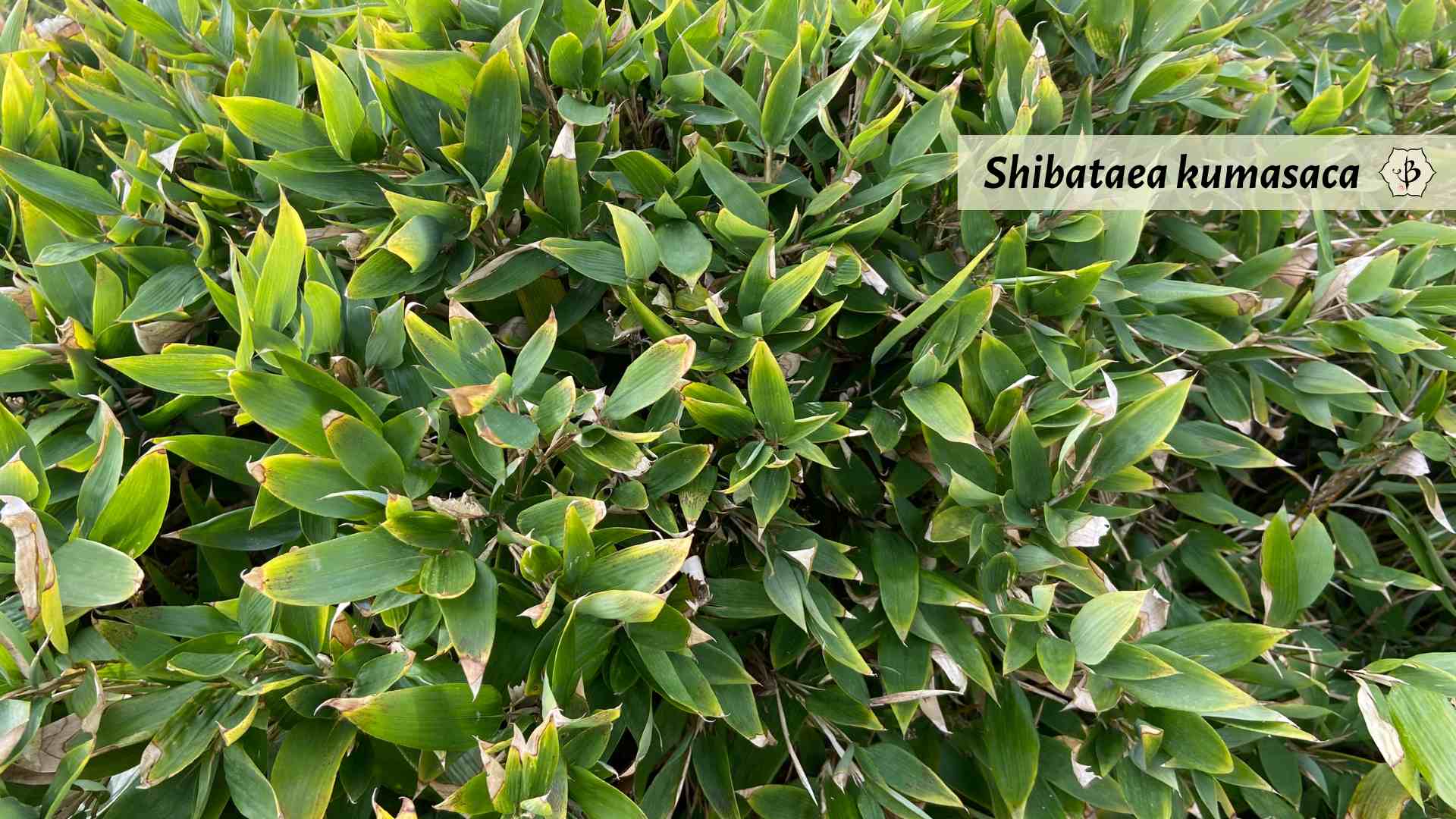
Maintaining dwarf bamboo
As mentioned above, the dwarf bamboos generally prefer a shady setting in the garden. In their natural habitat, they usually thrive under the canopy of larger trees and shrubs.
Like most bamboos and grasses, they require pretty regular watering, about once or twice a week. At the height of summer, they may need water every day. Sprinklers or the spray from a garden hose are preferable, to get the leaves wet. Just don’t do this if they are in the direct sunlight, as that can burn the leaves. If the leaves begin to lose color and turn pale, or start to curl, that’s a sign that they need more water.
If you’re growing bamboo as a border and want to keep it within a specific area, you may need to use a root barrier. Although the plants are small and short, the roots of dwarf runners can still spread quickly.
If you live in a climate that freezes, the leaves may brown and drop on the winter. In that case, it’s best to cut it all the way back and wait for the fresh green growth of spring. Even if it doesn’t freeze, you may want to do that just to promote more lateral growth and fresh foliage.
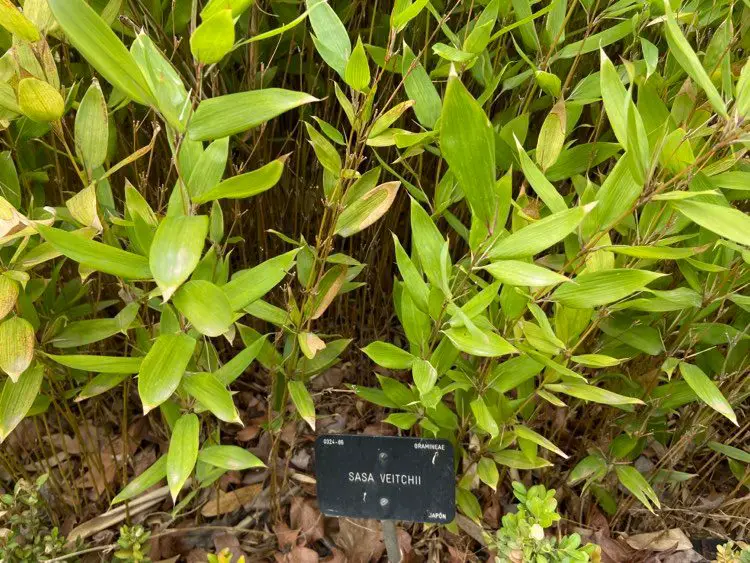
Learn more
If you found this article helpful, you might also enjoy the following posts.
- 10 Best bamboo varieties for your garden
- Genus Pleioblastus: Bamboo dwarves and accents
- Best clumping bamboos: Never run again
- Variegated bamboos with stripes
- Best bamboos for screens and hedges
- Bamboo bonsai
- 12 Cold hardy varieties of bamboo
FEATURE IMAGE: Pleioblastus fortunei in Sonoma, California. Photo by Fred Hornaday.

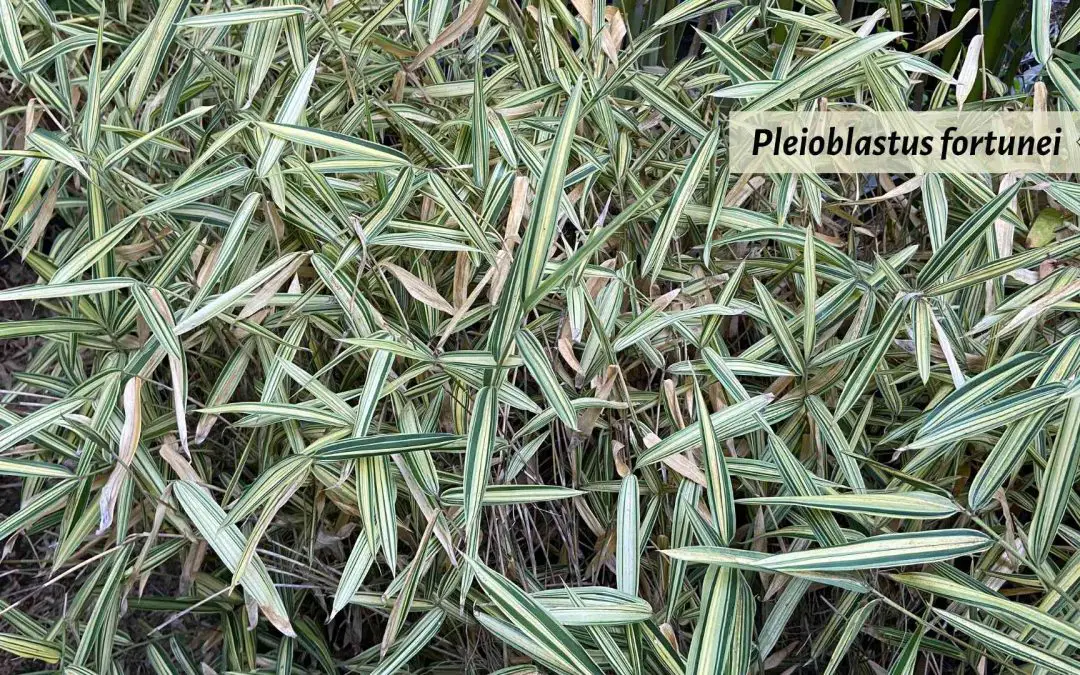
























Interesting article,, but I can’t figure out what kind of dwarf bamboo I have. It never got over about 18 inches until it had been growing for probably 10 years. I wasn’t pruning it back in the spring, and it finally got about 2 feet high. Now I use an electric hedge trimmer and cut it back late in the winter, so it doesn’t get as tall. It is variegated and is definitely a runner! I live in Jacksonville, AL, Zone 7B. I’ve never had to water it. It is beautiful, especially early in the spring. It had spread way further than I wanted, so last year I had help trying to dig it back to a smaller area. Putting in a buried barrier would be very difficult because of the many tree roots; but if I did, how deep would the barrier need to be? How far does it usually run underground before putting up foliage? (So I could leave a certain size boundary where I could control it.) If you cut off the end of a runner, do you need to pull that runner out all the way back to the patch or does that runner stop there?
Sounds like probably some variety of Pleioblastus. You can prune the roots (rhizomes), but they will keep growing, spreading, and branching out. The subterranean rhizomes can go out a couple of feet before they put up shoots.